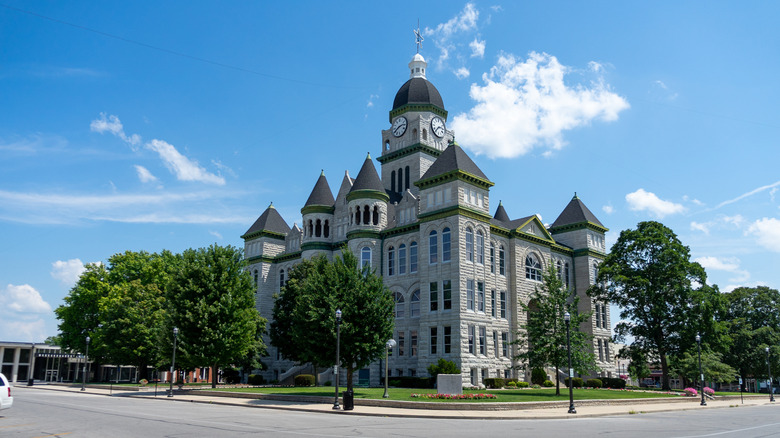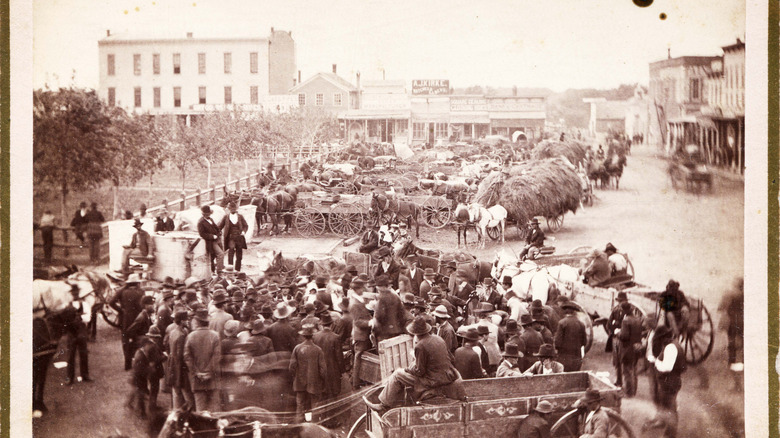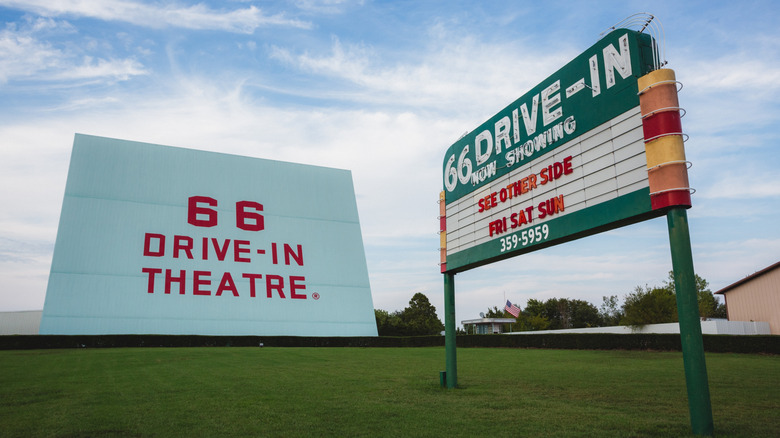An Artsy Missouri City On Route 66 Offers Unique Dining, Grand Architecture, And Historic Charm
For many Americans, road trips are a crucial part of vacationing. With so much diversity between states, driving allows you to see so many incredible sights without having to get a passport or book an expensive plane ticket. That said, the king of all road trips is the historic Route 66. Whether you're coming from the birthplace of the route near the Grand Canyon in Arizona or starting in Chicago, the route is full of underrated stops and locales.
As you drive through Missouri, you'll pass through numerous small towns; however, one stands out above the rest, thanks to its marvelous architecture and historic vibe. Carthage sits at the intersection of Highway 49 and Route 66, and it's worth stopping for at least a day before heading on to the next leg of your journey.
History comes alive as you explore the four historic districts of Carthage, aka Maple Leaf City. In fact, there are over 550 buildings listed on the National Registry of Historic Places, illustrating Carthage's importance at the crossroads of American history. Pack up the station wagon and let's drive over to check it out.
Getting to know Carthage, Missouri
If the name Carthage sounds familiar, that's because it comes from the ancient city of North Africa, known for being a thorn in the side of the Roman Empire. On the map, Carthage, Missouri, doesn't look like much, but it's responsible for a different kind of empire that sprang up during the late 1800s and into the 20th century.
One thing you'll notice as you traverse the city is how many large mansions and houses there are, all made from ornate marble and stone. At one time, Carthage was home to the most millionaires in the United States, thanks to its rich marble, lead, and zinc mining operations. The owners of these businesses built their estates to show off their wealth, and many of the original buildings still remain today.
But if you were alive in Carthage during the Civil War, you'd be forgiven for thinking the city would fade into obscurity. Confederate guerillas burned most of Carthage to the ground in 1861, and the city wouldn't bounce back until after the war in 1866. However, thanks to the massive mineral deposits nearby, the city's economy boomed and thrived and continues to do so today.
What to do when passing through Carthage on Route 66
First and foremost, you should explore Carthage's history when traveling through the city. While it's virtually impossible to see more than 500 historical buildings in a single trip, you can get a map that outlines some of the more prominent homes and structures throughout the area. The other side of history is Carthage's role during the Civil War. You can visit the Battle of Carthage State Historic Site, or you can walk through the Civil War Museum and read more about how the city rebounded after being burned to the ground.
But isn't Carthage also called Maple Leaf City? What's that all about? Well, if you happen to be passing through during the third week of October, you can see why Carthage has earned that moniker. Not only are there tons of maple trees throughout the city, but there's a week-long festival, complete with parades (it started as a marching band competition), Oktoberfest celebrations, and many other family-friendly activities.
Finally, Carthage is home to some of the best Midwest dining options along Route 66. So, before heading off to Tulsa and its trendy shopping street, you should grab a bite at some of the local hotspots. As you might imagine, steak is a popular option, with the Sirloin Stockade in the North and Lucky J Steakhouse and Arena on the outskirts of town to the South. However, Carthage is also home to many high-quality South American restaurants, such as Lulu's Pupuseria or La Playita. For the ultimate Route 66 experience, get your food to go and then watch a movie at the famous Route 66 Drive-In Theater.


